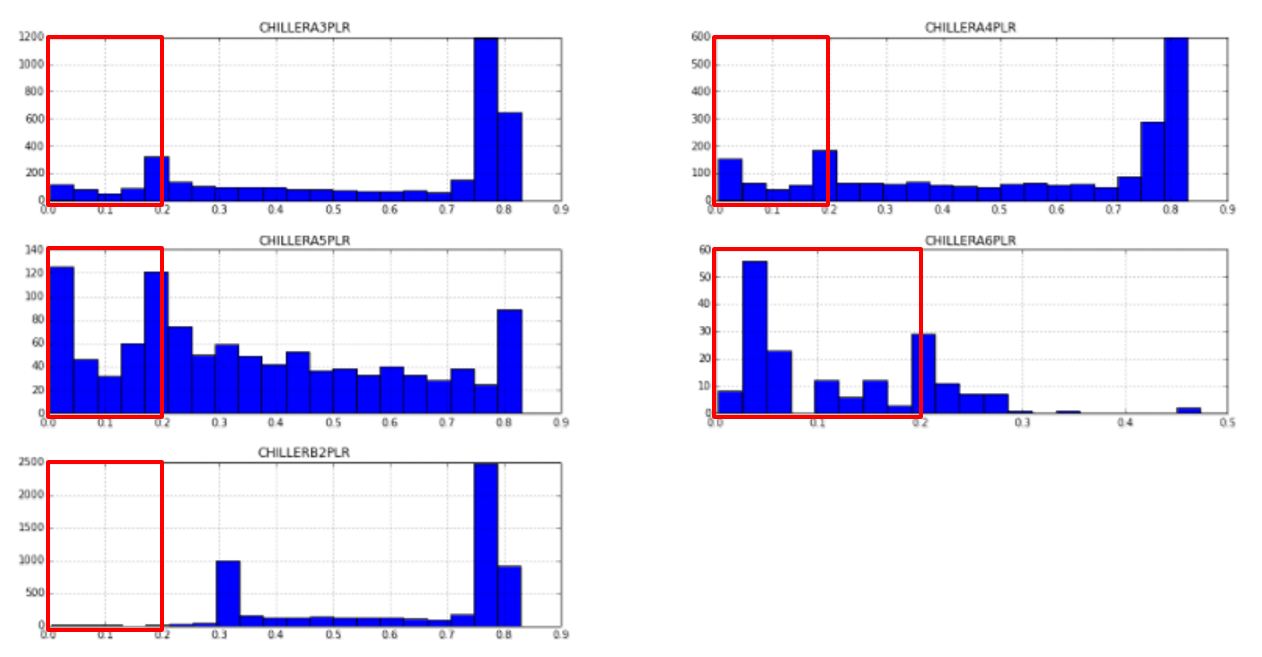It doesn't operate below the Mininum Part Load Ratio. Below that, it cycles. There's an output variable Chiller Cycling Ratio that shows you that.
The cycling ratio is the amount of time the chiller operates during each simulation timestep. If the chiller part-load ratio falls below the minimum part-load ratio, the chiller cycles on and off to meet the cooling load.
You also need to beware how you've reported stuff. : the Chiller Part Load Ratio is an Average value. So if you report it as anything else than Detailed, it will be averaged.
As a simplification, it means that if you have 2 Detailed timestep in the Timestep timestep at which you report it, and one Detailed PLR is 0.2 and the other one is 0.0, the reported value will be 0.1.
Looking at your graphs and the value counts, assuming this is for a full year simulation and given that the sum of value counts can be eyeballed to around 8760 (if you have excluded zero values), it's possible that you've reported at the Hourly timestep, in which case it's easy to grasp how the averaging property of this variable will lead to PLRs below 0.2...
Note that in reality, the chiller will also not operate below the Minimum Unloading Ratio. False loading is assumed: the electricity consumption is the same as it would be a the PLR corresponding to the Minimum Unloading Ratio.
The engineering reference would be a good place to read more on the model, for eg Electric Chiller Model Based on Condenser Entering Temperature, if you go down you'll find the interesting bit around this quote:
The model assumes that the cooling load is met through chiller unloading down to the minimum unloading ratio. False loading (e.g. hot-gas bypass) is assumed to occur between the minimum unloading ratio and the minimum part load ratio yielding constant electrical power consumption under these conditions. Below the minimum part load ratio, the chiller cycles on and off to meet very small loads and the power consumption during the on cycle is the same as when the chiller is operating at the minimum part load ratio. When the chiller part load ratio is less than the minimum part load ratio, the on-off cycling ratio of the chiller is calculated as follows and is available as an output variable.








